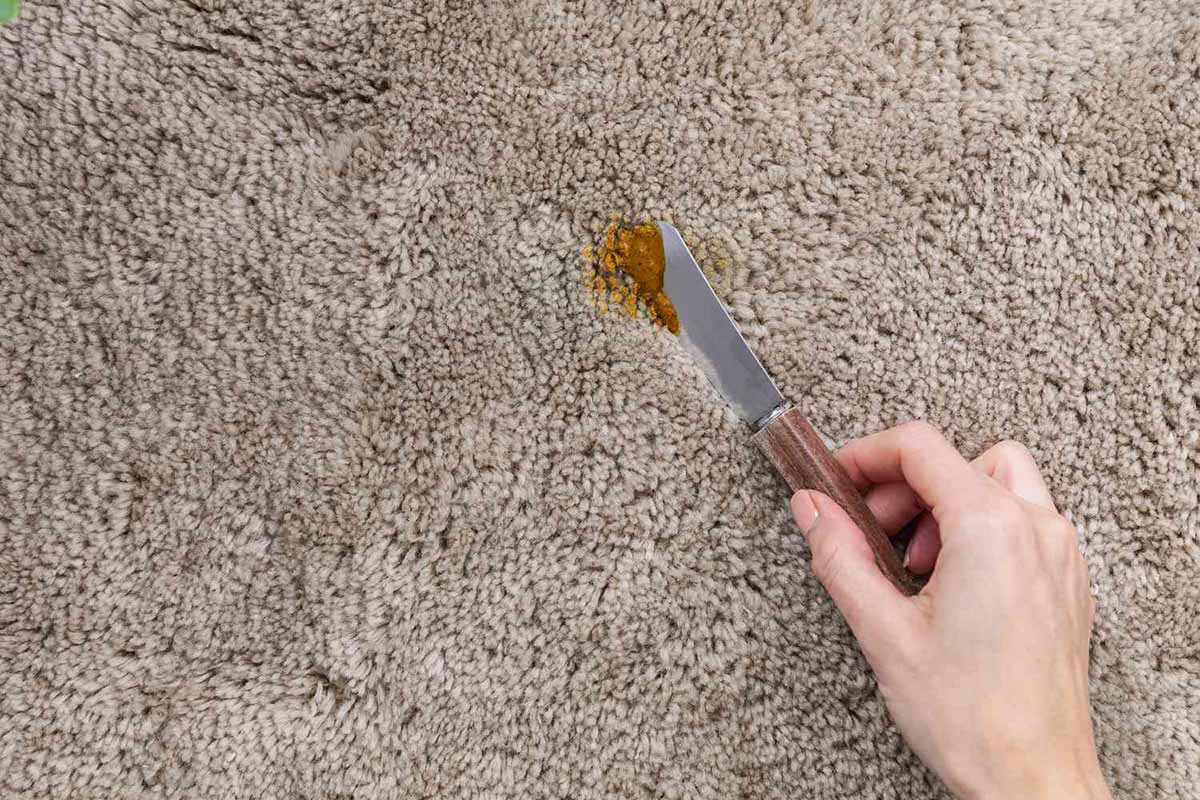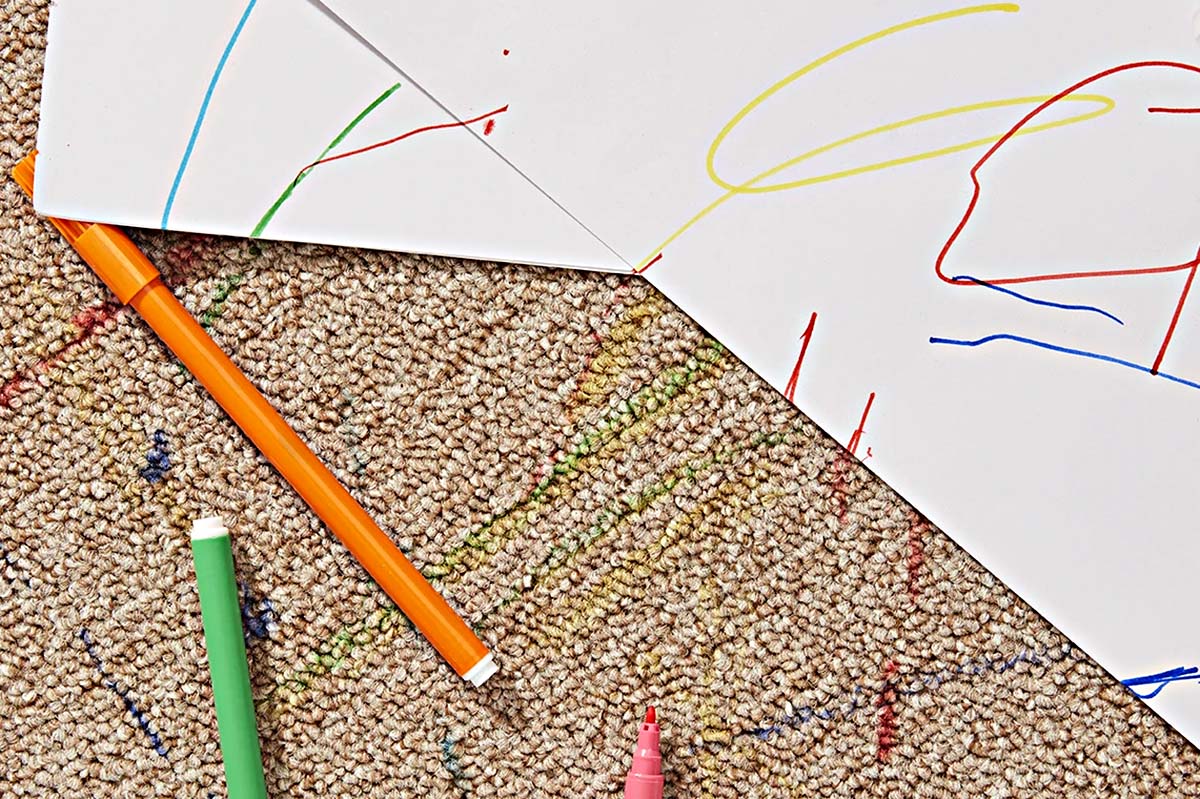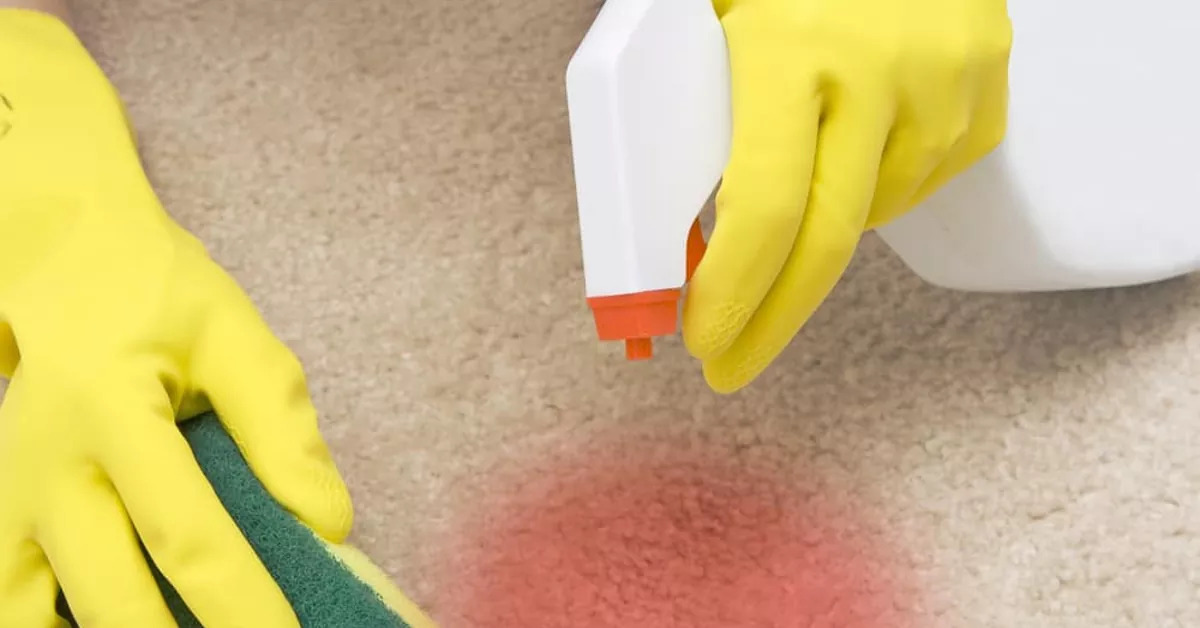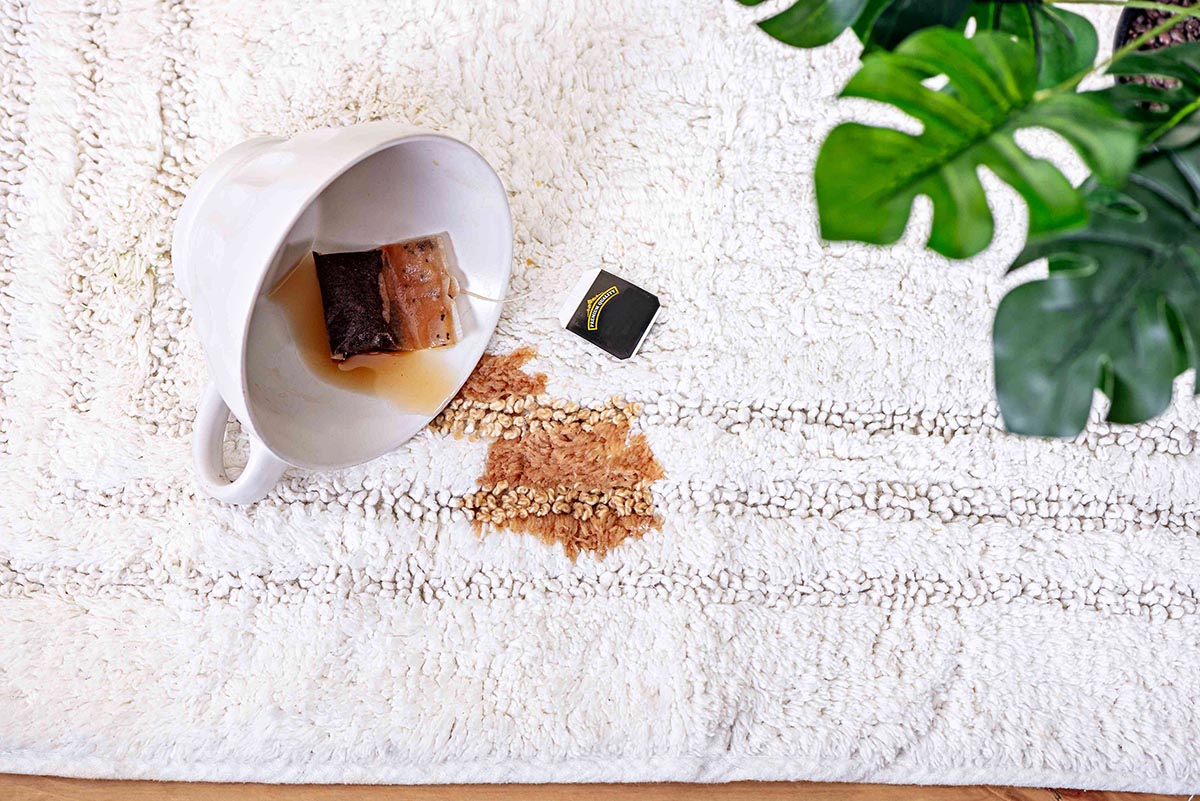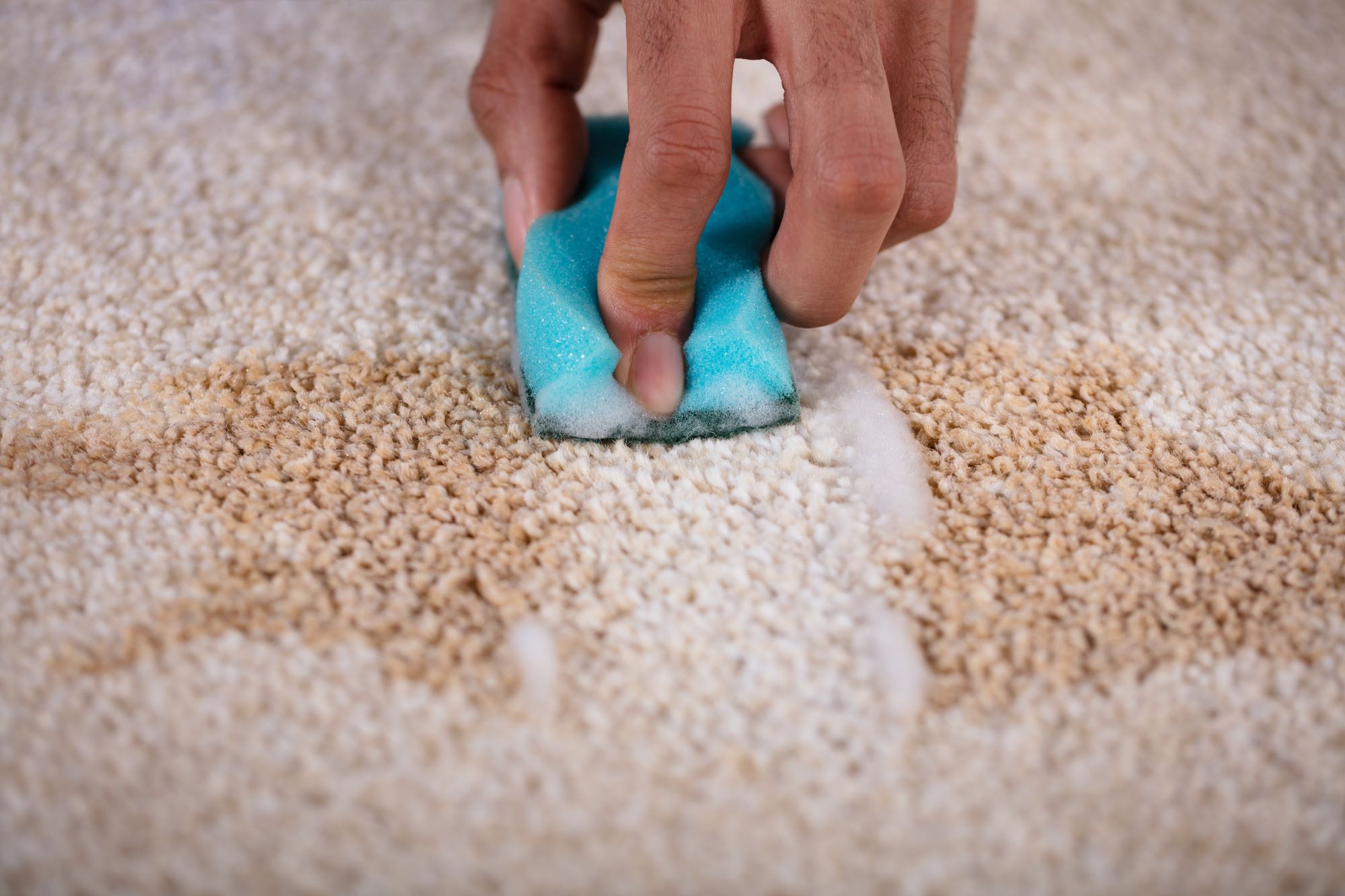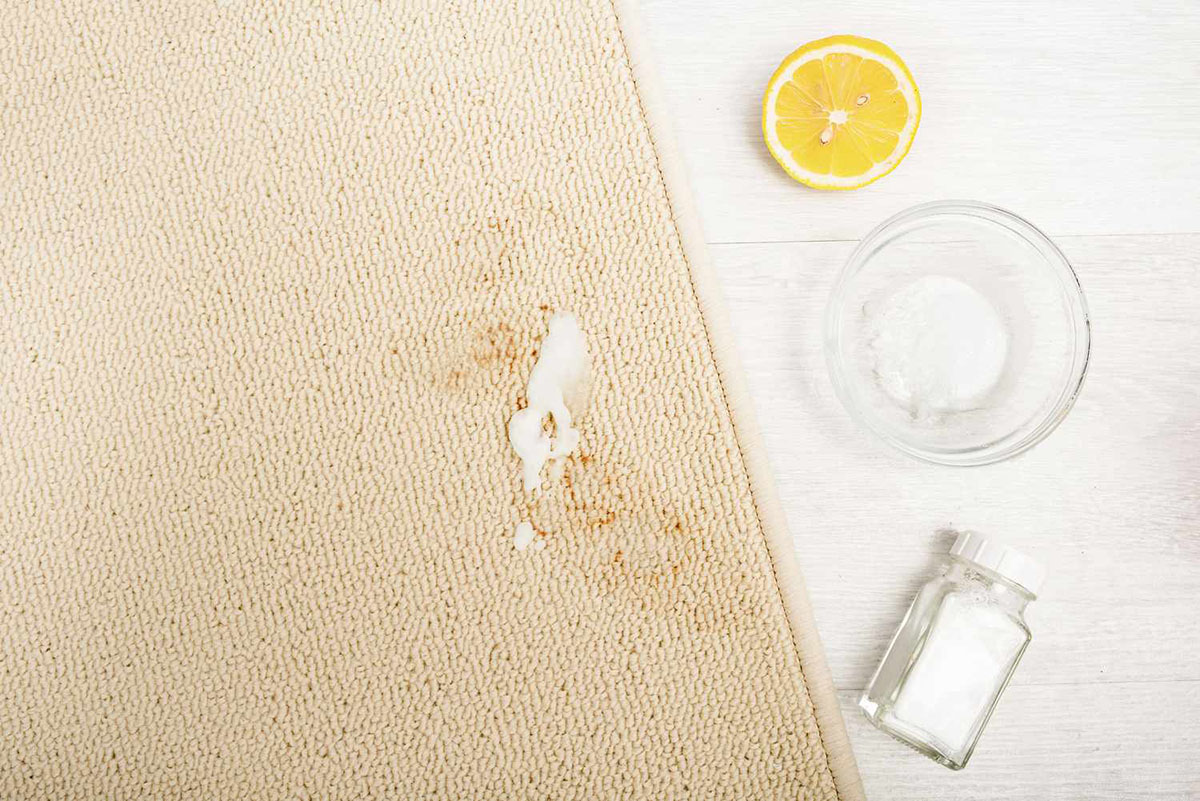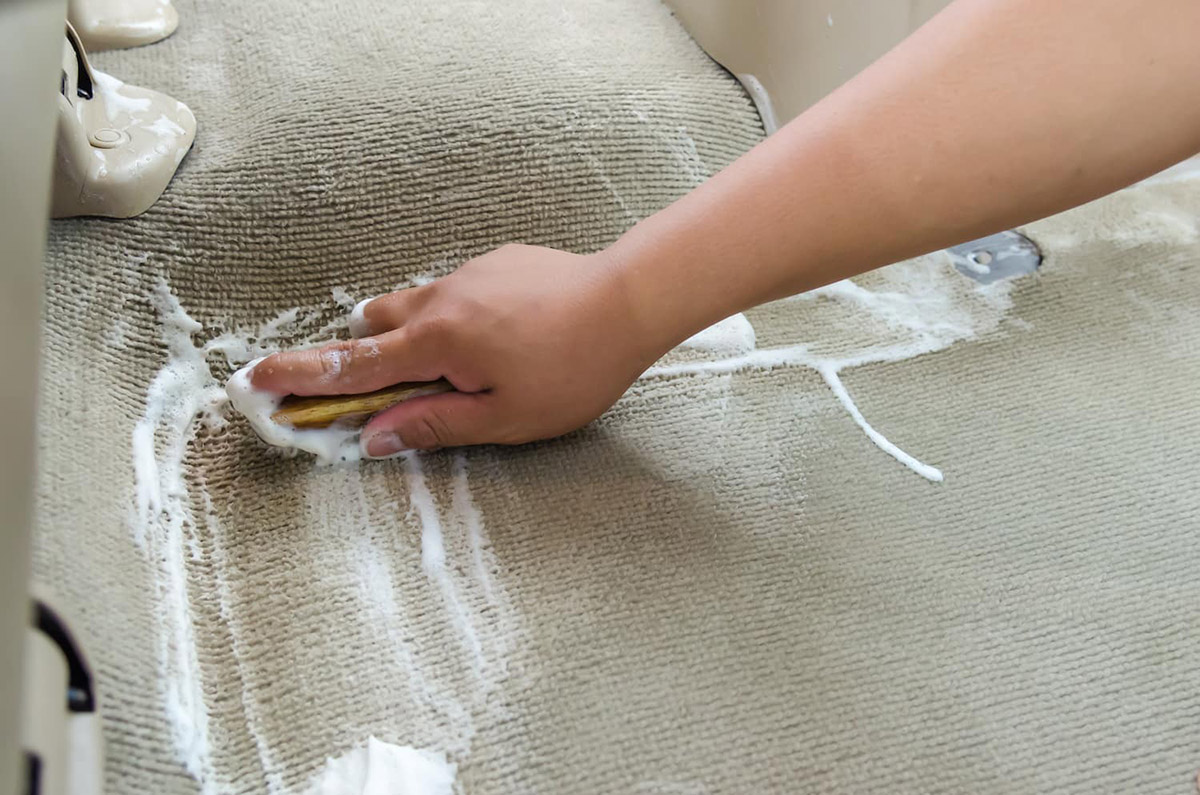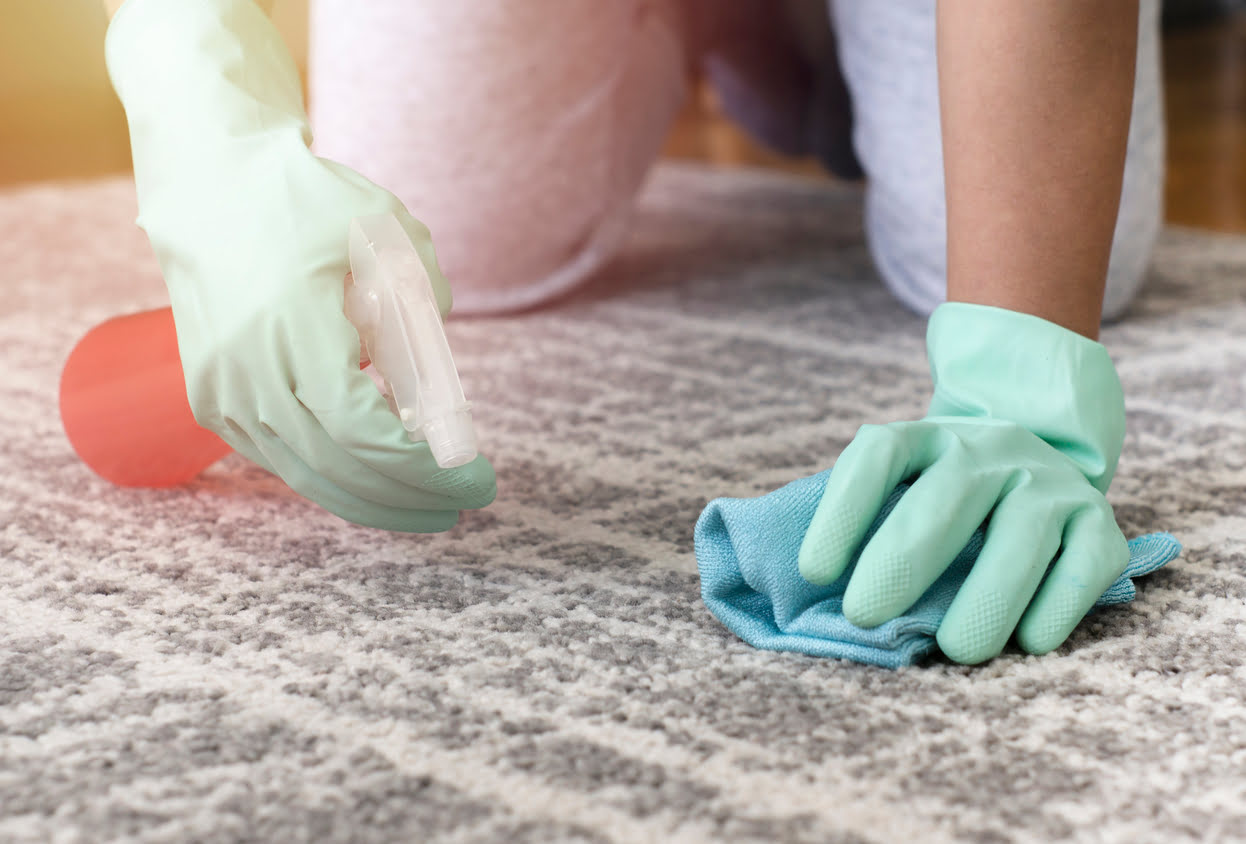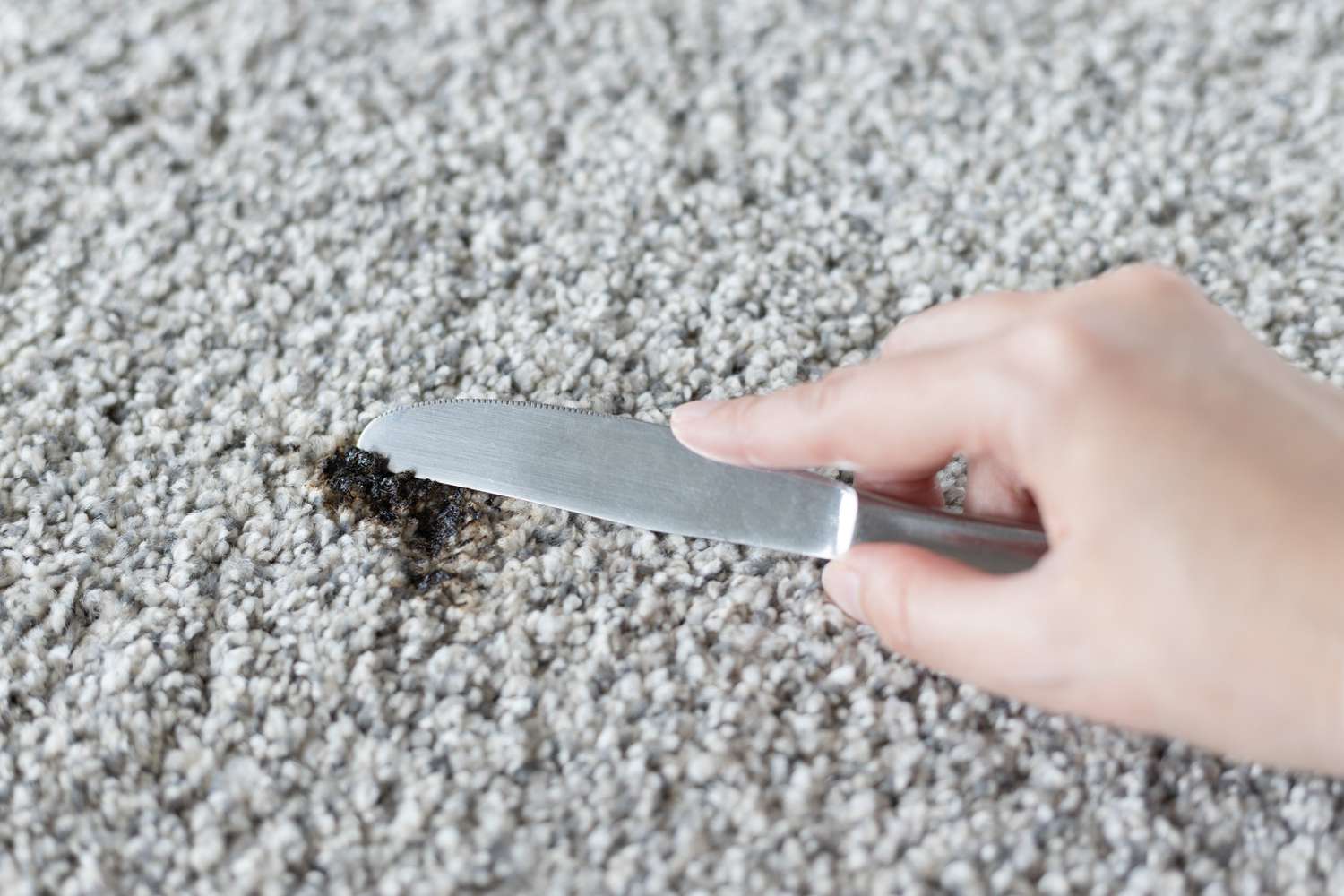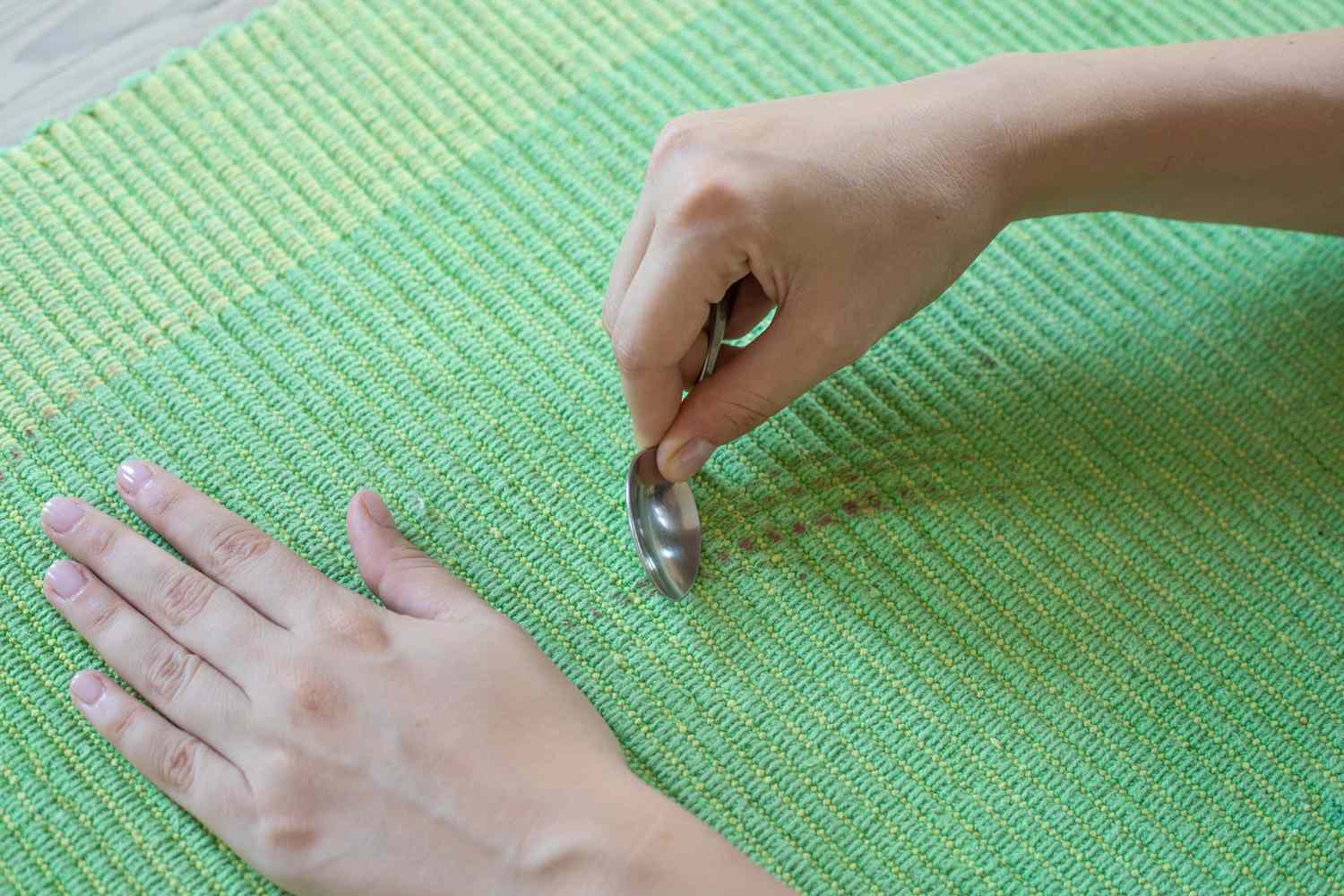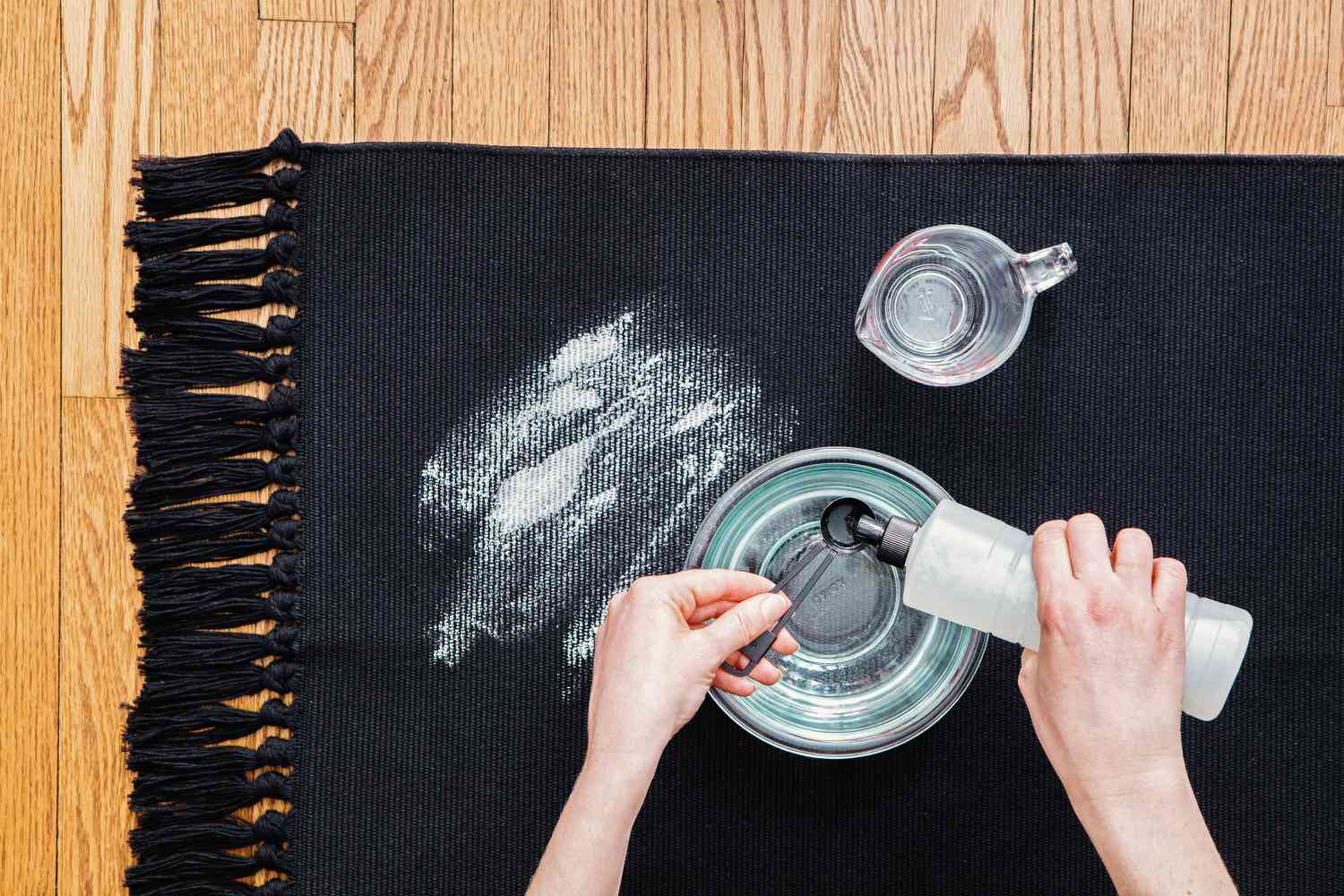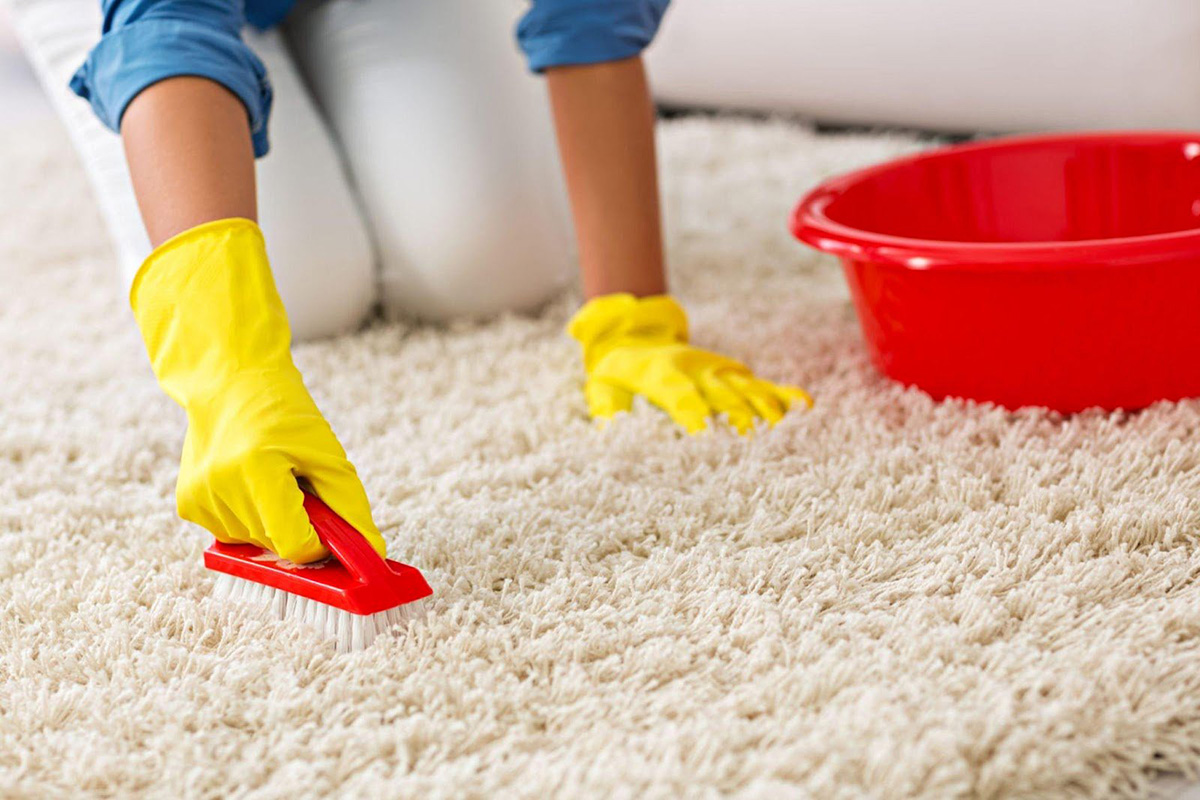

Articles
How To Protect A Carpet From Stains
Modified: September 1, 2024
Learn effective methods to protect your carpet from stains with these helpful articles. Keep your carpet looking fresh and clean for longer!
(Many of the links in this article redirect to a specific reviewed product. Your purchase of these products through affiliate links helps to generate commission for Storables.com, at no extra cost. Learn more)
Introduction
A carpet can be an investment in your home. It adds warmth, comfort, and aesthetic appeal to any room. However, keeping your carpet clean and stain-free can be a challenge, especially in high-traffic areas or homes with pets and children. Stains not only detract from the carpet’s appearance, but they can also be difficult to remove, potentially causing permanent damage.
Fortunately, there are several steps you can take to protect your carpet from stains and keep it looking fresh and vibrant. In this article, we will discuss ten tips and techniques to help you maintain a clean and stain-free carpet.
Key Takeaways:
- Regular vacuuming, using a stain-resistant carpet protector, and acting quickly on spills are key to protecting your carpet from stains and extending its lifespan. Implementing these steps will ensure a beautiful and comfortable living environment for years to come.
- Utilizing mild cleaning solutions, baking soda for odor removal, and scheduling professional deep cleaning are essential for effective stain removal and maintaining a clean, odor-free carpet. These steps contribute to a healthier indoor environment and a longer-lasting carpet.
Read more: How To Remove Water Stains From Carpet
Step 1: Vacuum Regularly
One of the simplest yet most effective ways to protect your carpet from stains is to vacuum it regularly. Vacuuming helps to remove dirt, dust, and debris that can settle into the fibers of the carpet and potentially lead to stains. Make it a habit to vacuum your carpet at least once a week, or more often in high-traffic areas.
When vacuuming, be sure to use a high-quality vacuum cleaner with strong suction power and a rotating brush or beater bar. This will help to loosen and lift dirt and particles from the carpet. It’s also important to change the vacuum bags or empty the canister regularly to maintain optimal performance.
To ensure thorough cleaning, take your time and make multiple passes over each section of the carpet. Pay extra attention to areas near entrances, as these tend to accumulate dirt and grit from outside. Additionally, don’t forget to vacuum under furniture and in corners where dust and debris can accumulate.
Vacuuming regularly not only helps to prevent stains from forming but also extends the lifespan of your carpet. By removing dirt and debris, you reduce the likelihood of them being ground into the fibers and causing fiber damage or discoloration.
Step 2: Use a Stain-Resistant Carpet Protector
An effective way to protect your carpet from stains is by applying a stain-resistant carpet protector. These protectors create a barrier on the carpet fibers, making it harder for stains to penetrate and become permanent.
Stain-resistant carpet protectors are typically available in spray or foam form and are easy to apply. Before application, it’s important to thoroughly clean and dry the carpet to ensure optimal adherence. Follow the manufacturer’s instructions carefully and apply the protector evenly across the entire carpet surface.
Once applied, the protector acts as a shield, making it easier to clean up spilled liquids or to remove dirt and grime. It helps to prevent stains from setting deep into the carpet fibers and allows for easier spot cleaning.
Keep in mind that stain-resistant carpet protectors are not a foolproof solution and do not make your carpet completely impervious to stains. However, they provide an additional layer of protection, giving you more time to react and clean up spills before they become permanent stains.
It’s important to periodically reapply the stain-resistant carpet protector, as the effectiveness of the coating can diminish over time due to regular wear and cleaning. Consult the manufacturer’s recommendations for guidance on how frequently to reapply the protector to ensure continued protection.
Using a stain-resistant carpet protector can significantly enhance the longevity and appearance of your carpet, giving you peace of mind in maintaining a clean and stain-free living space.
Step 3: Act Quickly on Spills
When it comes to preventing stains on your carpet, time is of the essence. Acting quickly on spills is essential to minimize the risk of permanent staining. The longer a spill sits on the carpet, the more likely it is to penetrate the fibers and leave a lasting mark.
As soon as a spill occurs, grab a clean cloth or paper towel and gently blot the affected area. Avoid rubbing the spill, as this can spread the stain and work it deeper into the carpet. Instead, press down firmly and absorb as much of the spill as possible.
If the spill is liquid, start by blotting up the excess moisture. Then, dampen a clean cloth with cool water and continue gently blotting the area to dilute and lift the stain. For solid spills, carefully scrape up any residue before blotting.
It’s important to note that using hot water or harsh cleaning solutions right away can actually set the stain, making it more difficult to remove. Stick to blotting with water initially, and only move on to cleaning solutions if necessary after consulting the manufacturer’s guidelines for your carpet type.
If the stain persists despite your immediate efforts, consider calling a professional carpet cleaner for assistance. They have the expertise and specialized cleaning agents to handle stubborn stains without causing damage to your carpet.
Remember, the quicker you act on spills, the better your chances of preventing them from becoming permanent stains on your carpet.
Step 4: Blot the Stain, Do Not Rub
When dealing with stains on your carpet, it’s important to remember the golden rule: blot, don’t rub. While your natural instinct may be to vigorously scrub at the stain, this can actually make matters worse by spreading the stain and pushing it deeper into the carpet fibers.
To effectively remove stains without causing further damage, use a blotting technique. Start by blotting the stain with a clean cloth or paper towel to absorb as much of the liquid or residue as possible. Apply gentle pressure and work from the outer edges of the stain toward the center to prevent spreading.
When blotting, avoid rubbing back and forth or scrubbing in a circular motion. This can cause friction and fray the carpet fibers, resulting in a frayed or discolored area. Instead, dab or press firmly on the stain to lift it out without spreading it.
If the stain is particularly stubborn, you may need to repeat the blotting process multiple times. Use fresh, clean portions of the cloth or paper towel for each round to avoid reapplying the stain back onto the carpet.
Remember to be patient and persistent when blotting stains. Take your time, and continue blotting until there is no transfer of the stain onto the cloth. For tough or set-in stains, consider using a carpet stain remover or seeking professional cleaning services for a more thorough treatment.
By adhering to the blotting technique, you can effectively remove stains from your carpet while minimizing the risk of causing additional damage. Treat your carpet with care, and it will reward you with a clean and pristine appearance.
Read more: How To Remove Stains From Wool Carpet
Step 5: Treat Stains with Mild Cleaning Solutions
When it comes to tackling stubborn stains on your carpet, using the right cleaning solutions can make a significant difference. However, it’s crucial to remember that harsh chemicals can damage the carpet fibers and alter the color. That’s why it’s best to start with mild cleaning solutions and gradually escalate if needed.
For most common stains, such as food spills, pet accidents, or dirt, a simple solution of mild dish soap and water can be highly effective. Mix a few drops of dish soap with warm water and apply the solution to the stain. Gently blot the area with a clean cloth or sponge, working from the outer edges toward the center. Rinse with clean water and blot again to remove any soap residue.
For tougher stains, you can try using a mixture of equal parts white vinegar and water. Vinegar acts as a natural stain remover and deodorizer. Apply the vinegar solution to the stain, let it sit for a few minutes, and then blot the area clean.
It’s essential to test any cleaning solution on a small, inconspicuous area of your carpet before using it on the stain. This helps you ensure that the solution doesn’t cause any discoloration or damage.
If you prefer to use store-bought carpet cleaners, look for products that are specifically designed for your type of carpet and the type of stain you’re dealing with. Follow the instructions on the product label carefully and test it on a hidden area before applying it to the stain. Avoid using excessive amounts of cleaner, as it can leave behind a residue that attracts more dirt.
Remember to blot the stain gently with the cleaning solution, rather than rubbing or scrubbing aggressively. Blotting helps to lift the stain without spreading it or damaging the carpet fibers.
By treating stains with mild cleaning solutions, you can effectively remove stains from your carpet while minimizing the risk of causing further damage. Always exercise caution and test any cleaning solution before using it on your entire carpet.
Consider applying a carpet protector spray to create a barrier against stains. Regular vacuuming and immediate spot cleaning can also help prevent stains from setting in.
Step 6: Use Baking Soda for Odor Removal
Odors can be a common issue with carpets, especially if there have been spills or accidents. Luckily, baking soda can be a powerful ally in neutralizing and eliminating odors from your carpet.
Baking soda works by absorbing odors rather than simply masking them. Its porous structure allows it to trap and neutralize unpleasant smells, leaving your carpet smelling fresh and clean.
To use baking soda for odor removal, start by sprinkling a generous amount evenly over the carpet. Use a clean broom or brush to work the baking soda into the fibers. Let it sit for at least 15 minutes or overnight, if possible, to allow it to absorb the odors.
After the desired time has passed, vacuum the carpet thoroughly to remove the baking soda. Use a vacuum cleaner with strong suction power to ensure you remove all the baking soda from the carpet.
If you’re dealing with particularly stubborn odors, you can try mixing the baking soda with a few drops of essential oil before applying it to the carpet. This will not only help to eliminate odors but also leave a pleasant fragrance behind.
Regularly using baking soda for odor removal can help keep your carpet smelling fresh and clean. You can repeat this process as needed or whenever you notice any unpleasant odors.
Remember to always spot test a small, inconspicuous area of the carpet before applying baking soda to the entire surface. This ensures that it doesn’t cause any discoloration or damage to your carpet.
By utilizing the power of baking soda, you can eliminate odors from your carpet and create a more pleasant and inviting living environment.
Step 7: Avoid Using Harsh Chemicals
While it may be tempting to use strong and harsh chemicals to tackle stubborn stains on your carpet, it’s important to exercise caution. Harsh chemicals can damage the carpet fibers, strip away the color, and leave behind residue that attracts more dirt.
Instead of relying on chemical-laden cleaners, opt for safer and more gentle alternatives. As mentioned earlier, mild dish soap and water can be highly effective for removing many common stains. You can also try using natural cleaning solutions like vinegar, baking soda, or lemon juice.
When using any cleaning solution, it’s essential to test it on a small, inconspicuous area of your carpet before applying it to the stain. This helps you ensure that the solution doesn’t cause any discoloration or damage to your carpet.
If you prefer to use store-bought carpet cleaners, look for products that are specifically designed for your type of carpet and the type of stain you’re dealing with. Choose cleaners that are labeled as non-toxic, eco-friendly, or safe for pets and children.
It’s also worth considering hiring a professional carpet cleaner who uses safe and environmentally friendly cleaning methods. They have the expertise and the proper equipment to handle tough stains effectively without causing harm to your carpet.
Remember, taking a gentle and cautious approach to cleaning your carpet will not only protect its integrity but also maintain a healthier environment for you and your family.
Step 8: Schedule Professional Deep Cleaning
While regular vacuuming and spot cleaning are essential for maintaining the cleanliness of your carpet, professional deep cleaning is also crucial to keep it in optimal condition. Over time, dirt, debris, and stains can accumulate deep within the carpet fibers, making it difficult to remove with regular household cleaning methods.
Professional deep cleaning involves using specialized equipment and cleaning solutions to extract deeply embedded dirt and grime from your carpet. It helps to restore the carpet’s appearance, remove stubborn stains, and improve the overall indoor air quality of your home.
It’s recommended to schedule professional deep cleaning at least once or twice a year, depending on the level of foot traffic and the presence of pets or children in your home. However, if you notice excessive soiling or stains, you may need to schedule cleanings more frequently.
When choosing a professional carpet cleaning service, look for a reputable company with certified technicians and experience in handling various types of carpets. They should use safe and effective cleaning methods that are suitable for your specific carpet fibers.
Professional deep cleaning not only refreshes the appearance of your carpet but also helps to extend its lifespan. The extraction of dirt and debris helps prevent premature wear and tear, allowing your carpet to look and feel its best for years to come.
Be sure to follow any pre-cleaning instructions provided by the professionals, such as moving furniture and ensuring proper ventilation. This will help ensure the best possible results from the deep cleaning process.
By incorporating professional deep cleaning into your carpet maintenance routine, you can enjoy a cleaner and healthier living environment while preserving the beauty and longevity of your carpet.
Read more: How To Remove Makeup Stains From Carpet
Step 9: Place Mats and Rugs in High-Traffic Areas
High-traffic areas of your home, such as entryways, hallways, and living rooms, are more prone to dirt, wear, and stains on your carpet. One effective way to protect these areas is by placing mats and rugs in strategic locations.
Mats and rugs serve as a barrier between the outside elements and your carpet, helping to trap dirt, mud, and moisture from shoes before they reach the carpet fibers. They can also act as a visual reminder for guests to wipe their feet before entering your home.
Choose durable and easy-to-clean mats and rugs specifically designed for high-traffic areas. Look for options that have a non-slip backing to prevent accidents and enhance stability. Additionally, ensure that they fit properly and do not create a tripping hazard.
Regularly clean and maintain the mats and rugs by vacuuming or shaking them outdoors to remove loose dirt and debris. Depending on the material, you may also be able to wash or spot clean them as needed.
In addition to protecting your carpet from dirt and stains, mats and rugs can also add style and personality to your living spaces. Choose designs and colors that complement your existing decor or opt for neutral options that blend seamlessly with your surroundings.
Remember to periodically rotate the mats and rugs to distribute the wear evenly across your carpet. This helps to prevent excessive wear and traffic patterns from forming on specific areas of the carpet.
By strategically placing mats and rugs in high-traffic areas, you can minimize the amount of dirt and wear on your carpet, keeping it cleaner and prolonging its lifespan.
Step 10: Train Pets to Stay Off the Carpet
If you have pets, you are likely familiar with the challenges they can present when it comes to keeping your carpet clean and free from stains. Pet accidents, tracking in dirt from outside, and scratching can all contribute to the wear and tear of your carpet. Training your pets to stay off the carpet can help mitigate these issues and preserve its pristine condition.
Consistency is key when training your pets to stay off the carpet. Start by establishing clear boundaries and designating specific areas where they are allowed to roam freely. Use positive reinforcement techniques, such as treats and praise, to reward your pets when they stay within these boundaries.
If you catch your pet in the act of approaching or stepping onto the carpet, use a firm and clear command to redirect them back to the designated area. Be patient and consistent in enforcing the rules, and always follow through with reinforcement when your pet complies.
In addition to training, provide your pets with alternative comfortable and designated spaces, such as rugs or pet beds, where they can relax and spend their time. Make these areas appealing by placing their favorite toys, blankets, or even a cushy bed to encourage them to choose those spots over the carpet.
Regular exercise and playtime can also help to alleviate any pent-up energy that may lead to undesirable behaviors on the carpet. Engage your pets in activities that keep them physically and mentally stimulated, reducing the likelihood of them getting bored and resorting to carpet-related mischief.
If your pet has an accident on the carpet, act quickly to clean it up using appropriate stain removal methods. Use an enzyme-based cleaner specifically designed for pet stains to effectively eliminate any odors and discourage repeat accidents in the same spot.
Be patient during the training process, as it may take time for your pets to fully understand and adopt the new rules. With consistent effort and positive reinforcement, you can successfully train your pets to respect the boundaries and stay off the carpet.
By training your pets to stay off the carpet, you can minimize the risk of stains, dirt, and damage, and maintain a cleaner and fresher living environment for both you and your furry companions.
Conclusion
Maintaining a clean and stain-free carpet is a vital aspect of keeping your home looking fresh and inviting. By following these ten steps, you can protect your carpet from stains and extend its lifespan, ensuring a beautiful and comfortable living environment for years to come.
Regular vacuuming keeps dirt and debris from settling into the carpet fibers, while using a stain-resistant carpet protector adds an extra layer of defense against spills. Acting quickly on spills and using proper blotting techniques can prevent stains from setting and becoming permanent.
Treating stains with mild cleaning solutions and avoiding harsh chemicals helps to remove stains effectively without causing damage. Baking soda proves to be a great ally for eliminating odors, and placing mats and rugs in high-traffic areas safeguards your carpet from dirt and wear.
Scheduling professional deep cleaning at least once or twice a year removes deep-seated dirt and revives your carpet’s appearance. Finally, training pets to stay off the carpet minimizes the risk of accidents and damage, keeping it cleaner and odor-free.
Remember, a well-maintained carpet not only enhances the aesthetics of your space but also contributes to a healthier indoor environment by trapping allergens and improving air quality.
By implementing these steps as part of your carpet care routine, you can enjoy a clean, stain-free, and long-lasting carpet that will be a source of pride and comfort in your home.
Frequently Asked Questions about How To Protect A Carpet From Stains
Was this page helpful?
At Storables.com, we guarantee accurate and reliable information. Our content, validated by Expert Board Contributors, is crafted following stringent Editorial Policies. We're committed to providing you with well-researched, expert-backed insights for all your informational needs.
